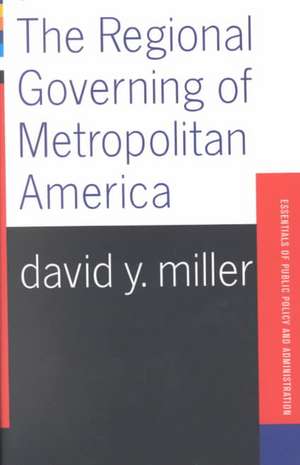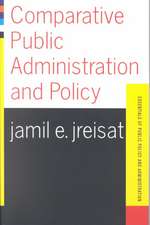The Regional Governing Of Metropolitan America
Autor David Milleren Limba Engleză Paperback – 25 feb 2002
| Toate formatele și edițiile | Preț | Express |
|---|---|---|
| Paperback (1) | 416.22 lei 6-8 săpt. | |
| Taylor & Francis – 25 feb 2002 | 416.22 lei 6-8 săpt. | |
| Hardback (1) | 1000.27 lei 6-8 săpt. | |
| Taylor & Francis – 13 sep 2019 | 1000.27 lei 6-8 săpt. |
Preț: 416.22 lei
Nou
Puncte Express: 624
Preț estimativ în valută:
79.65€ • 86.49$ • 66.91£
79.65€ • 86.49$ • 66.91£
Carte tipărită la comandă
Livrare economică 22 aprilie-06 mai
Preluare comenzi: 021 569.72.76
Specificații
ISBN-13: 9780813398075
ISBN-10: 081339807X
Pagini: 176
Dimensiuni: 156 x 234 x 10 mm
Greutate: 0.45 kg
Ediția:New.
Editura: Taylor & Francis
Colecția Routledge
Locul publicării:Oxford, United Kingdom
ISBN-10: 081339807X
Pagini: 176
Dimensiuni: 156 x 234 x 10 mm
Greutate: 0.45 kg
Ediția:New.
Editura: Taylor & Francis
Colecția Routledge
Locul publicării:Oxford, United Kingdom
Cuprins
Introduction -- Financial Overview of the State and Local Governments System -- Defining Types of Local Government -- Metropolitan Regions in the United States -- Difference in State Systems and Metropolitan Areas -- The Classic Debate in the Organization of Metropolitan Regions -- Defining Regionalism and Approaches to Regionalism -- Metropolitan Issues
Notă biografică
David Miller is an associate dean an d associate professor with the Graduate School of Public and International Affairs at the University of Pittsburgh.
Descriere
This book explores the regional governing of metropolitan America in a comprehensive and systematic fashion. It reviews the financial system of state and local government at the broadest possible level and explores the relationships between the federal government and the fifty state governments.















